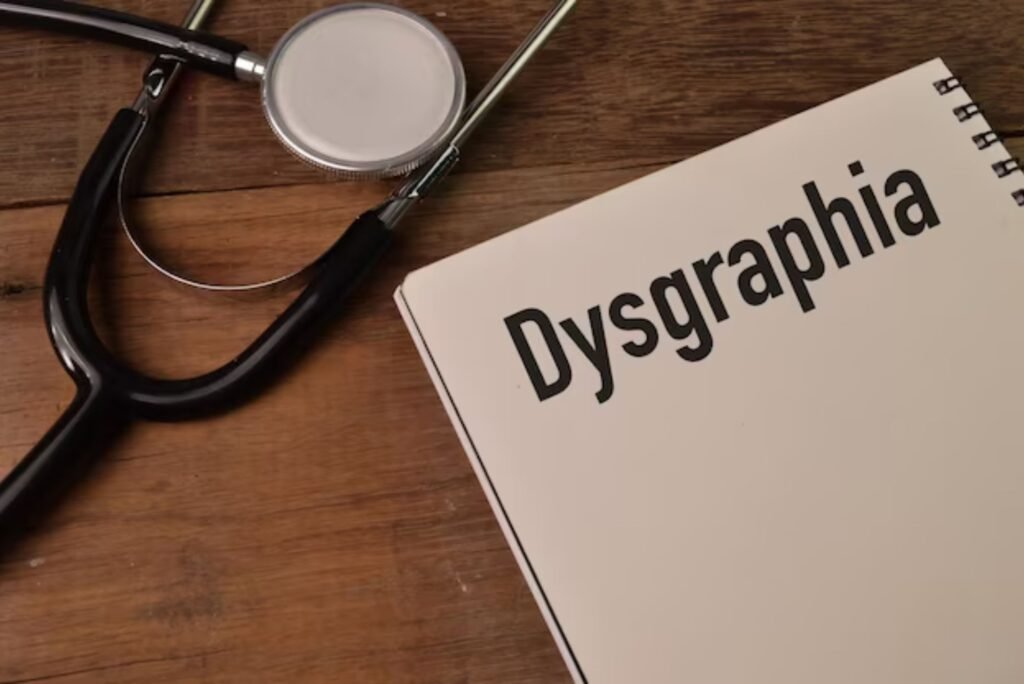Dsygraphia (handwriting issues )
Dsygraphia (handwriting issues )
Understanding Dysgraphia: Beyond Messy Handwriting Dysgraphia, often referred to as writing difficulty, is a specific learning disability that affects an individual’s ability to write clearly and efficiently. It goes beyond simply having messy handwriting and impacts the way individuals physically form letters, write words, and express themselves through written language.
Symptoms of Dysgraphia:
While the specific challenges can vary among individuals, some common symptoms of dysgraphia include:
Difficulty forming letters and words:
Letters may be inconsistently sized or shaped, with uneven spacing and baseline.
Poor handwriting may be mistaken for laziness or lack of effort.
Slow and labored writing:
Individuals may struggle to keep up with the pace of writing required in school or professional settings.
The act of writing can be physically tiring and lead to hand fatigue or frustration.
Poor grip and posture:
Difficulty holding a pencil correctly or maintaining proper posture can lead to discomfort and further hinder writing ability.
Difficulty with spelling and grammar:
Challenges with fine motor skills used for writing can sometimes lead to difficulties with spelling and overall language expression in written form.
Organizational difficulties:
Individuals with dysgraphia may struggle to maintain an organized writing space, leading to messy papers and difficulty structuring written work.
Causes of Dysgraphia:
The exact cause of dysgraphia is not fully understood, but research suggests a combination of factors may contribute:
Brain development differences: Specific areas of the brain responsible for motor skills, language processing, and visual-spatial processing may be involved.
Genes and family history: Having a family member with dyslexia or other learning disabilities can increase the risk.
Prenatal or perinatal complications: Issues during pregnancy or birth may impact brain development and contribute to dysgraphia.
Treatment Options:
While there is no cure for dysgraphia, various approaches can help individuals manage the challenges and improve their writing skills:
Occupational therapy:
Therapists work on improving fine motor skills, hand coordination, and developing proper pencil grip and posture.
Special education services:
Specially trained teachers provide individualized instruction, strategies, and accommodations to support writing development.
Assistive technology:
Tools like word processors with spell check, voice recognition software, and specialized keyboards can support written expression.
Adaptive techniques:
Learning strategies like breaking down writing tasks into smaller steps, practicing specific letter formation, and using graphic organizers can be helpful. Early diagnosis and intervention are crucial for individuals with dysgraphia. By understanding the challenges and implementing appropriate support measures, individuals can develop coping mechanisms, improve their writing skills, and achieve their full potential in school, work, and daily life.
Remember:
Dysgraphia is a learning disability, not a reflection of intelligence or effort.
Each individual experiences dysgraphia differently. A supportive environment, tailored interventions, and ongoing guidance can significantly enhance the lives of individuals with dysgraphia. If you suspect dysgraphia in yourself or someone you know, seeking professional evaluation from a qualified healthcare professional like a developmental pediatrician, occupational therapist, or educational psychologist is essential. They can diagnose properly, recommend appropriate treatment options, and connect you with valuable resources and support systems.

Book an Appointment
Physiotherapy: Your Path to Pain Relief
Physiotherapists are movement experts who can help manage and reduce pain. Through manual therapy, exercise programs, and education, they can improve your mobility and function, empowering you to live an active, pain-free life.
